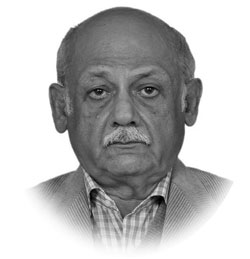India-Pakistan relations, past, present and future
RELATIONS between India and Pakistan continue to be the most antagonistic rivalries in the sphere of international relations during the twenty first century.
Since the dawn of independence in 1947 both countries have been in a constant state of sabre-rattling leading to major military conflicts in 1965 and 1971 plus numerous border skirmishes including the very explosive Kargil conflict.
The show of hatred and enmity has continued and both states have tried their best to diplomatically outmanoeuvre each other in the UN and other diplomatic forums.
Since the last two decades, both countries have been armed with nuclear weapons and some very lethal delivery systems and this capability has turned the Indian sub-continent into the most probable nuclear flash point in the world.
The India-Pakistan rivalry has even impacted the politics of the super powers and the USA, Russia and China have been deeply involved in the political tussle between the two nuclear armed nations in the sub-continent.
This bitter rivalry between the two Asian countries has the potential to have a very adverse effect on peace in Asia or for that matter the entire world.
Causes of the long and bitter rivalry between the two countries can be said to be ideology, territory, geopolitics and domestic politics.
Ideology or religion is the root cause and the other causes have been added with the passage of time and the love-hate relationship has sometimes dampened and sometimes accentuated the bitterness between the two countries.
The very basic differences between the two countries lie in the ideology based theory called the two-nation theory that believed in religion as the basis of statehood and that Hindus and Muslims were two different nations living in the same territory.
Differences of ethnicity or language were considered as secondary issues, this was the political stance of the All India Muslim League led By Mohammad Ali Jinnah whereas the All India Congress led by the likes of Nehru and Gandhi believed in a united India as a secular state governed by parliamentary democracy.
Many eminent Muslims like Maulana Abul Kalam Azad and others also supported the Congress Party and they were called the nationalist Muslims.
The Pakistan demand was finally accepted by the British Government and what followed was the bloodiest period in the history of the sub-continent.
During the partition millions of Muslims, Hindus and Sikhs moved across the borders of the two independent states in 1947.
This phase gave rise to extreme religious violence, bloodshed and killings on a monumental scale.
Indian leaders had rejected the two-nation theory and the Pakistani leaders had embraced it resulting in further discord, bitterness and enmity between the two countries.
More bitterness and hatred was created after the emergence of the territorial dispute when the Maharaja of Kashmir signed the Instrument of Accession and joined his state to India.
This act of the Maharaja of Kashmir led to the first India-Pakistan conflict but the fighting was confined to the Kashmir region and the international boundary was not crossed by any of the combatants in Kashmir.
Today the India-Pakistan conflict is classified as enduring rivalry which can be defined as a conflict lasting more than two decades.
Religious ideology and territorial conflict are the two major causes of the rivalry and conflict between the two countries, and other causes can be the geo-political situations immediately after gaining independence from the British.
In the post-WW-II period at the beginning of the Cold War Pakistan was quick to become an ally of the USA and by 1954 had joined two military pacts led by the USA namely SEATO and CENTO, not only that the USA was also given the use of an air base in Peshawar from where to fly their U-2 aircraft for spying on the Soviet Union.
India on the other hand decided to remain non-aligned in the Cold War and Nehru with Nasser and Marshal Tito laid the foundations of the Non-Aligned Movement or NAM.
Hostility and aggression reached a boiling point in 1971over the East Pakistan crisis and the subsequent war and emergence of Bangladesh.
In this conflict the USA and China both showed a definite tilt towards Pakistan and in reply India concluded a treaty of defence and friendship with the Soviet Union.
The Soviet invasion and occupation of Afghanistan in the 1980s drove Pakistan further into the American camp and deepened the US reliance on Pakistan in its bid to defeat Soviet designs in Afghanistan.
After the 9/11 attacks, Pakistan once again became a frontline state in the global war on terrorism led by the USA while India very adroitly managed to stay on the sidelines avoiding any displeasure of their Russian ally.
The potential for peace between the two countries is really immense.
They share a common culture, many languages, cuisine, dress and many festivals, they have more in common than many European countries who now live in peace and harmony after centuries of conflict under the umbrella of a political pact called the European Union.
To eliminate the horrors of a nuclear holocaust and for the sake of future generations both countries need to eliminate all causes of conflict and come together in a political and economic pact.
—The writer is Professor of History, based in Islamabad.










